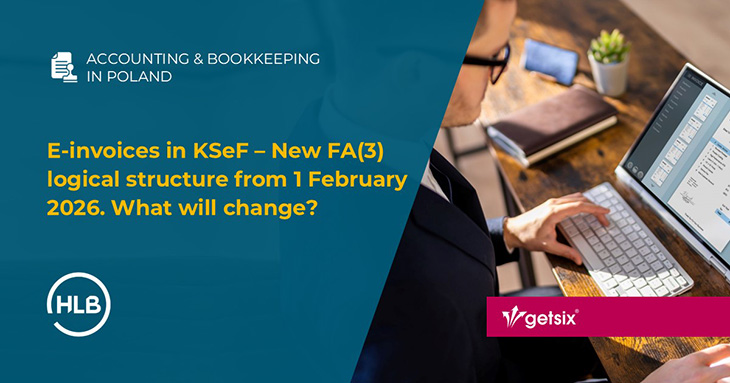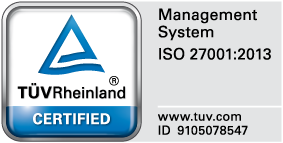E-invoices in KSeF – New FA(3) logical structure from 1 February 2026. What will change?
Starting from 1 February 2026, a new logical structure for e-invoices – FA(3) – will come into force in Poland. It will replace the current FA(2) format used in the National e-Invoicing System (KSeF). The Polish Ministry of Finance has already released a draft version of the new schema, with final publication scheduled for June 2025.
What does this mean in practice, and how should businesses and accounting firms prepare?
In this article:
What is the FA(3) Logical Structure?
The logical structure defines the technical “skeleton” of a structured invoice (e-invoice), specifying how invoice data must be presented in an XML format compliant with KSeF.
From 1 February 2026, every e-invoice issued and transmitted via KSeF will be required to follow the FA(3) schema – including original, corrective, and settlement invoices – even if they refer to transactions from earlier periods.
Key changes in the FA(3) e-invoice structure
The new FA(3) version was developed in response to feedback from Polish businesses, accountants, auditors, and software providers.
Key updates include:
- Attachments can now be added to e-invoices – such as specifications, contracts, or delivery protocols.
- New contractor type: employee – allowing easier handling of business expense reimbursements.
- Address field is no longer mandatory for some entities (e.g. third parties), simplifying invoice creation.
- The number of items per batch correction has been limited to 50,000 – previously there was no limit.
- Bank account number format has been updated – longer formats and special characters are now allowed.
- Expanded date range – dates as early as 1990 can now be used (e.g. for contract or order dates).
- Tax ID field adjusted – now allows special characters.
- Special identifiers for local government entities (JST) and VAT groups – making these easier to identify in the system.
- Increased character limit for the product/service name field – up to 512 characters for more detailed descriptions.
- Improved partial payment indicator – enabling specification of multiple payments covering one invoice.
- New field for payment link – making it easier for customers to pay invoices online.
- New field for KSeF payment identifier – helping to match payments with specific invoices more efficiently.
Better integration and future compatibility
- FA(3) is more integration-friendly with accounting and ERP systems.
- It brings the Polish KSeF system closer to European standards, although it still does not fully align with EN 16931, the EU-wide e-invoicing norm.
Timeline and compliance obligations
The transition from FA(2) to FA(3) will take effect on 1 February 2026. From that point:
- All taxpayers issuing invoices via KSeF will be required to use the FA(3) format.
- Large enterprises (annual turnover above PLN 200 million) must be ready by February 2026.
- All other taxpayers will need to comply from 1 April 2026.
- As of 1 January 2027, further integration is planned – including mandatory links between KSeF and fiscal cash registers.
What does this mean for businesses?
The transition to FA(3) is more than a technical update – it also has significant organizational implications.
Companies must:
- Update their accounting software.
- Integrate new fields into their payment and invoicing processes.
- Test the new invoice structure within their ERP systems.
- Train accounting and finance teams on the changes.
- Accounting firms should also verify that their systems will support FA(3) and assess the impact on automation and reporting workflows.
Why it’s best not to wait
Although penalties for non-compliance with KSeF have been suspended until the end of 2026, delaying implementation may still lead to:
- invoice errors,
- payment disruptions,
- overload of internal teams as deadlines approach.
The implementation of FA(3) marks a crucial step toward the full rollout of Poland’s mandatory e-invoicing system (KSeF). With the draft schema already available and the final documentation set for publication in June 2025, businesses have a clear opportunity to prepare. Now is the right time to take action.
If you have any questions regarding this topic or if you are in need for any additional information – please do not hesitate to contact us:
CUSTOMER RELATIONSHIPS DEPARTMENT

ELŻBIETA
NARON-GROCHALSKA
Head of Customer Relationships
Department / Senior Manager
getsix® Group
***














